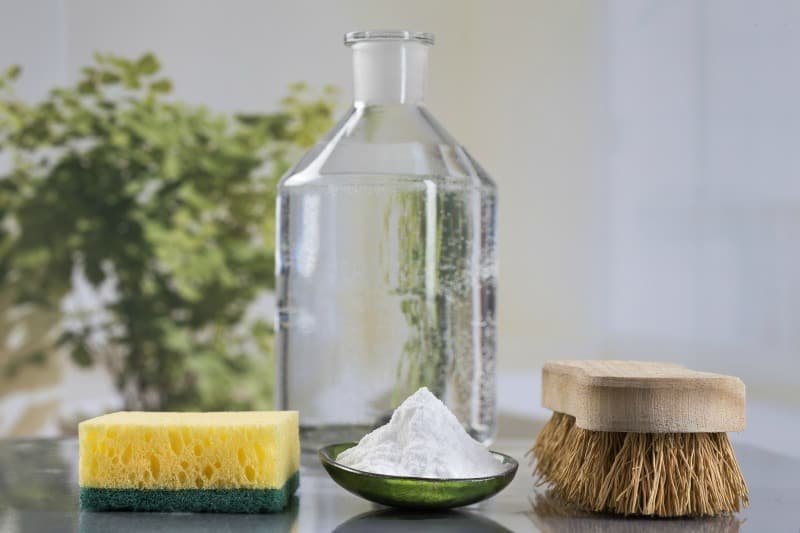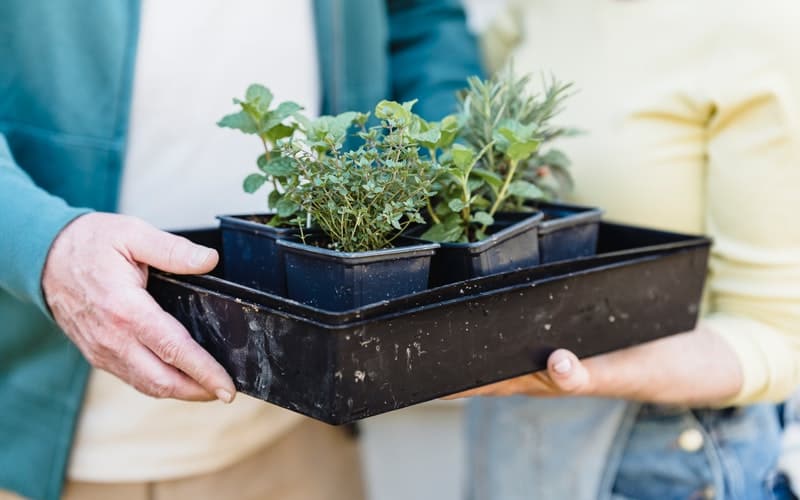Last Updated on January 7, 2024 by Ellen Christian
Eco-minimalism is a popular term that basically means sustainable living. Here are some tips to become an eco-friendly minimalist and lessen your environmental footprint.
Posts may be sponsored. This post contains affiliate links, which means I will make a commission at no extra cost to you should you click through and make a purchase. As an Amazon Associate I earn from qualifying purchases.
Eco Minimalism
So, what is an eco minimalist? An eco-friendly minimalist is someone who lives an eco-friendly lifestyle while they try to own fewer material possessions.
This may combine eco-friendly activities like gardening with decluttering to own less stuff and use fewer resources.
It’s learning to live more sustainably by generating less waste and reducing consumption.
What is an eco-minimalist?
An eco-minimalist is a person who combines the principles of environmental sustainability with those of minimalism. Simply put, they strive to lessen their impact on the environment by reducing their consumption and waste. They achieve this by owning fewer things and choosing options that are better for our planet.
For example, instead of buying new clothes, an eco-minimalist might choose to buy second-hand or repair clothes they already have. They might also choose to grow their own vegetables instead of buying them in a supermarket. This way, they are not only reducing the amount of stuff they own but also making choices that are less harmful to the environment.
What is sustainable living?
Sustainable living is a lifestyle that tries to reduce a person’s use of the Earth’s natural resources, and a person’s personal resources. It’s about making choices that cause less harm to the environment. This way of life aims to reduce our carbon footprint and the waste we produce.
For example, a person living sustainably might choose to walk, bike, or use public transport rather than driving a car, which reduces greenhouse gas emissions. They might also choose to buy less stuff, recycle more, and eat less meat. Each of these choices can help to protect our environment for future generations.
What is environmental minimalism?
Environmental minimalism essentially refers to the practice of reducing one’s carbon footprint and environmental impact by conscious choice and intentional living. This lifestyle champions the idea of “less is more”, focusing on owning fewer things and minimizing waste.
The goal is to live lightly on Earth, using resources sparingly and consciously, thereby supporting the health and well-being of our planet.
Is minimalism good for the environment?
Yes, minimalism is beneficial for the environment. By owning less and consuming less, we reduce the demand for the production of goods, which in turn decreases the use of natural resources and energy.
Furthermore, a minimalist lifestyle translates to less waste production, reducing the harmful impact on our environment. Simple changes like reusing items and choosing sustainable products can make a significant difference.
How are eco-living and minimalism different?
Eco-living and minimalism, though similar in many respects, hold distinct differences. Primarily, eco-living focuses on making choices that have less detrimental impact on the environment, such as using renewable energy sources or consuming organic food. Minimalism, on the other hand, centers on the idea of “less is more”, prioritizing simplicity in lifestyle and owning fewer possessions.
Eco-living can incorporate aspects of minimalism, but it is not solely about reducing possessions. Rather, it emphasizes making environmentally friendly decisions. Minimalism can contribute to eco-living by helping to reduce consumption and waste, but its primary focus is simplicity and intentionality in all aspects of life.
How to start on eco minimalism
Starting on the path of eco minimalism may seem overwhelming, but there are simple steps that you can incorporate into your busy lifestyle as a woman:
Declutter your closet: Evaluate the clothes you have and donate or sell what you no longer need. This reduces unnecessary items and promotes a minimalist lifestyle.
Choose quality over quantity: When buying new items, opt for high-quality products that are durable, reducing the need for frequent replacements.
Shop second-hand: Shopping at thrift stores or online marketplaces can significantly decrease your environmental footprint.
Go paperless: Opt for digital copies of bills, magazine subscriptions, and invitations, reducing paper waste. You may not be able to switch to zero waste living but you can practice conscious consumerism.
Bring your own: Carry reusable water bottles, coffee cups, and shopping bags to avoid single-use plastics. This can make a big difference if you want to reduce waste. We love the items at Repurpose and use quite a few.
Meal prep: Plan and prepare your meals for the week, reducing food waste and the need for packaged, processed foods.
DIY beauty products: Making your own skincare, soap, or cosmetic products not only ensures you know what’s in them but also reduces packaging waste.
Buy in bulk: Whenever possible, buy non-perishable items in bulk to reduce packaging.
Invest in energy-efficient appliances: Though they might cost more initially, they save both energy and money in the long run.
Choose sustainable transportation: Opt for walking, cycling, or public transportation over personal car use whenever possible to minimize carbon emissions.
Remember that every small change can make a significant impact, and the key is to start and gradually incorporate more eco-minimalist practices into your routine.
Tips for consuming less
Eco-friendly living is a large part of your eco-minimalism journey. You can become more environmentally conscious by starting with a few of these eco-friendly lifestyle tips.
Consider Green Purchasing: Whenever possible, opt for products that are organic, locally made, or Fair Trade. This not only supports ethical and sustainable practices but also reduces the carbon footprint linked to transportation. Try to find an eco-friendly alternative whenever possible. Check out Aspen Clean for eco-friendly cleaners.
Start Composting: Composting organic waste like fruit peels and coffee grounds not only reduces waste that goes to landfills but also provides nutritious soil for your houseplants or garden.
Adopt a Minimalist Wardrobe: Having a capsule wardrobe with versatile pieces not only simplifies your daily dressing routine but also reduces the need to constantly buy new clothes. Start by simplifying your closet.
Reduce Electricity Use: Make a habit of turning off lights when leaving a room and unplugging devices when not in use. This saves energy and reduces your utility bill.
Use a Programmable Thermostat: Automatically adjusting your home’s temperature when you’re asleep or out can significantly reduce energy consumption and use less energy.
Plant a Home Garden: Even if it’s just a small herb garden on your windowsill, growing your own food reduces your dependence on supermarket produce, which often involves heavy use of pesticides and long-distance transportation.
Choose Reusable Feminine Products: Consider using menstrual cups or reusable sanitary pads. They’re environmentally friendly and can save money in the long run.
Go Digital: Digitalize your notes, shopping lists, and bills to reduce paper usage. Not only is this eco-friendly, but it also helps keep your living space clutter-free.
Limit Water Usage: Simple changes like turning off the tap while brushing your teeth or taking shorter showers can make a significant difference in conserving water.
Educate Yourself and Others: Stay informed about sustainability and share your knowledge with friends and family. Inspiring others to adopt eco-minimalism can lead to an even more significant environmental impact.
Benefits of eco minimalism
Adopting an eco-minimalist lifestyle can bring about a plethora of benefits, both for the individual and the environment. Firstly, it leads to reduced greenhouse gas emissions as it involves making choices that limit waste and are energy-efficient.
Secondly, the slower pace of life that eco-minimalism promotes can greatly improve mental health. The de-cluttered, simpler lifestyle can reduce stress, and conscious, mindful living can enhance mental well-being.
Thirdly, eco-minimalism results in the need for less storage space due to owning fewer possessions, leading to more open and serene living spaces.
Furthermore, it encourages the reduction of harmful chemicals by promoting organic, DIY, and natural products, which not only benefit our health but also the environment. In simple words, eco-minimalism enables a more sustainable, healthier, and mindful lifestyle.
Key values of eco minimalists
If you want to get started with eco-minimalism, here are a few eco friendly tips to help you adopt the key values.
Conscious consumption: Be aware of the products you buy and their impact on the environment. Choose items that are sustainably produced and packaged, and reduce consumption where possible.
Reduce, Reuse, Recycle: This age-old mantra holds a prominent place in eco-minimalism. It’s about minimizing waste, repurposing items instead of discarding them, and recycling whenever possible.
Simplicity: Simplify your lifestyle. Owning fewer possessions can lead to less stress and more freedom. Simplification also applies to your daily routines and commitments.
Sustainability: Make choices that are sustainable for the long term. This might involve buying quality, durable products over disposable ones, or choosing renewable energy sources.
Mindfulness: Be present and conscious in your choices. This involves understanding the implications of your decisions and striving to make ones that are beneficial to both you and the planet.
To sum up, both eco-minimalism and regular minimalism share the principle of living with less. Minimalists’ main goal is to lessen their stuff to clear their physical areas and minds, which makes their lives easier and lowers unnecessary tension.
Meanwhile, eco-friendly living, while also valuing simplicity like minimalism, goes the extra mile by considering the environmental impact of their life choices. It encourages practices like mindful buying, recycling, and reducing waste, all to do less harm to our earth. In essence, these two ways of life work well together, promoting a more thoughtful, intentional, and eco-friendly way of living.
More eco friendly living articles
You may want to read a few of these articles.
How to be more eco-friendly when you clean
Favorite simple living documentaries

Ellen is a busy mom of a 24-year-old son and 29-year-old daughter. She owns six blogs and is addicted to social media. She believes that it doesn’t have to be difficult to lead a healthy life. She shares simple healthy living tips to show busy women how to lead fulfilling lives. If you’d like to work together, email info@confessionsofanover-workedmom.com to chat.










